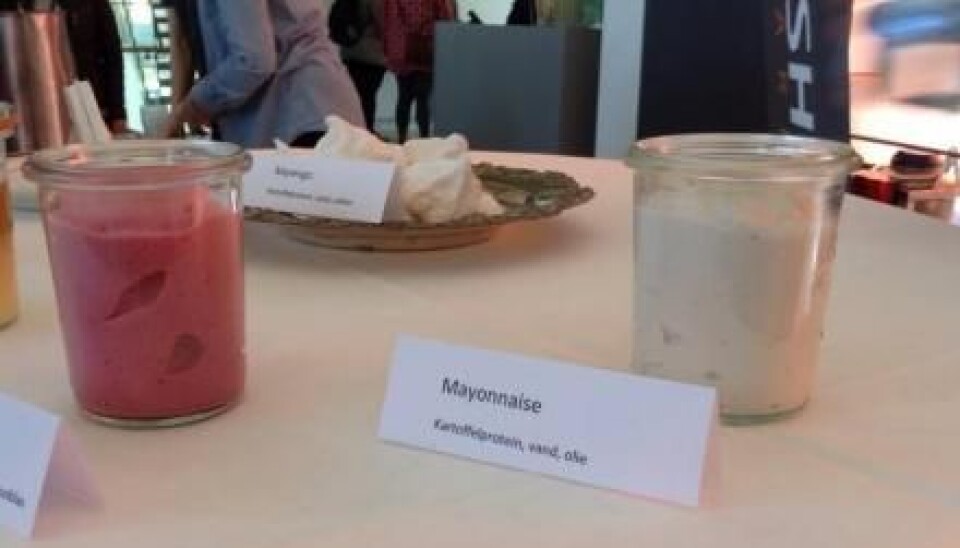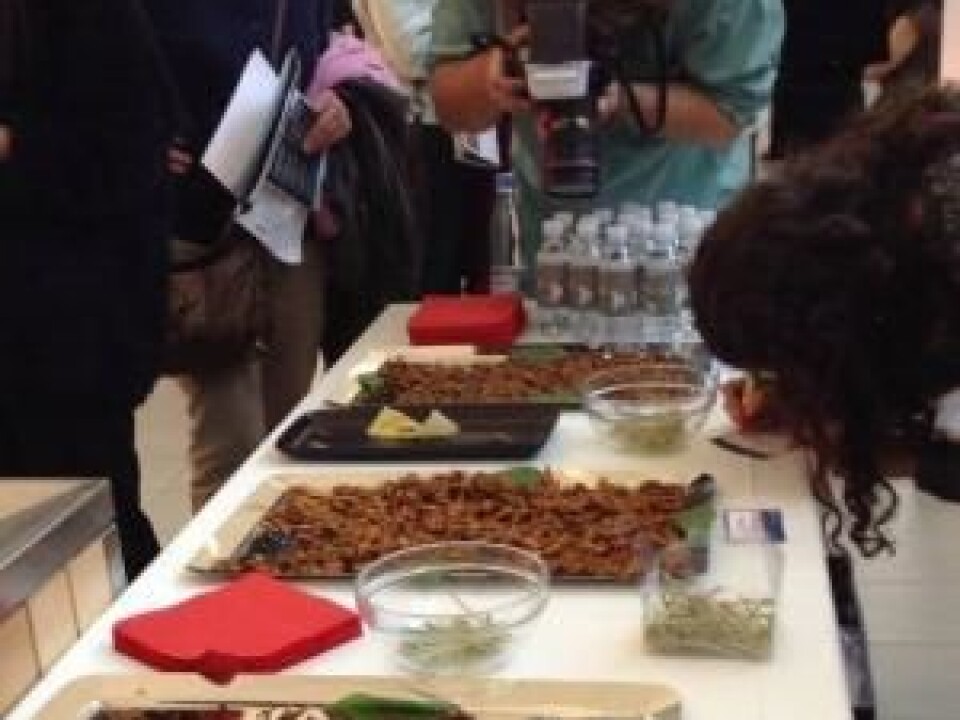
Can seaweed burgers and potato mayo feed a growing world population?
The recent ’Food in the Future’ arrangement at Aarhus University offered some examples of what we will be eating in the future, including a seaweed burger and mayonnaise made from potato proteins.
How do we feed an ever-growing world population?
This was one of the topics at the recent annual nationwide Danish Festival of Research (Forskningens Døgn).
As part of the festival, researchers and students at Aarhus University tried to answer this question by demonstrating new uses of potato proteins, serving deep-fried crickets and providing insight into the seemingly endless uses of seaweed. The event was titled ‘Food in the Future’.
“This year, the focus is on food – the production of it and the lack of it. We cannot provide clear-cut answers to the big questions, but we have a lot of interesting research in the field that can contribute to our understanding of food,” said Anders Frølund, the head of Aarhus University’s Communications Department.
Potato protein can replace eggs

One of the researchers at the event was Jesper Malling Schmidt, who in collaboration with two potato producers has managed to convert potato protein into a useable ingredient in e.g. meringue, mayonnaise and mousse.
“Potato protein is a waste product which hasn’t been used much up to now, so we are trying to see if it can be used for consumption,” he said.
”Vegans can benefit from the protein as it is a plant product that can replace eggs. We hope that it will be available in supermarkets in the future.”
Seaweed is a superfood
Visitors to the event were also given an explanation of why seaweed has become known as a superfood, and how we can use it in our kitchens:
”Seaweed belongs to the group known as superfoods, which is a term for extremely healthy foods. This is partly because seaweed contains lots of proteins and dietary fibres, while also being low in carbohydrates. In these days of dieting, that is a desirable thing,” said Mette Møller Nielsen, a PhD fellow at Aarhus University’s Department of Bioscience – Marine Ecology.
She gave some examples of what makes seaweed a super-vegetable:
- Seaweed contains ten times as many minerals as crops on land – especially iron and calcium, and there are seaweed species that contain more calcium than some dairy products.
- Seaweed also contains ‘good salt’ (potassium), which is significantly healthier than kitchen salt.
- Along with the potassium salts, it also has a high content of iodine, which can boost metabolism and may contribute to weight loss.
- Seaweed has the right ratio of Omega 3 and 6 fatty acids.
”We currently get most of our food from plants and animals, but seaweed is a distinct group, so by including it, we get a new food source,” said Nielsen, adding that a group of students made a burger where the bun, the stuffing and the salad contained seaweed.
---------
Read the Danish version of this article at videnskab.dk




